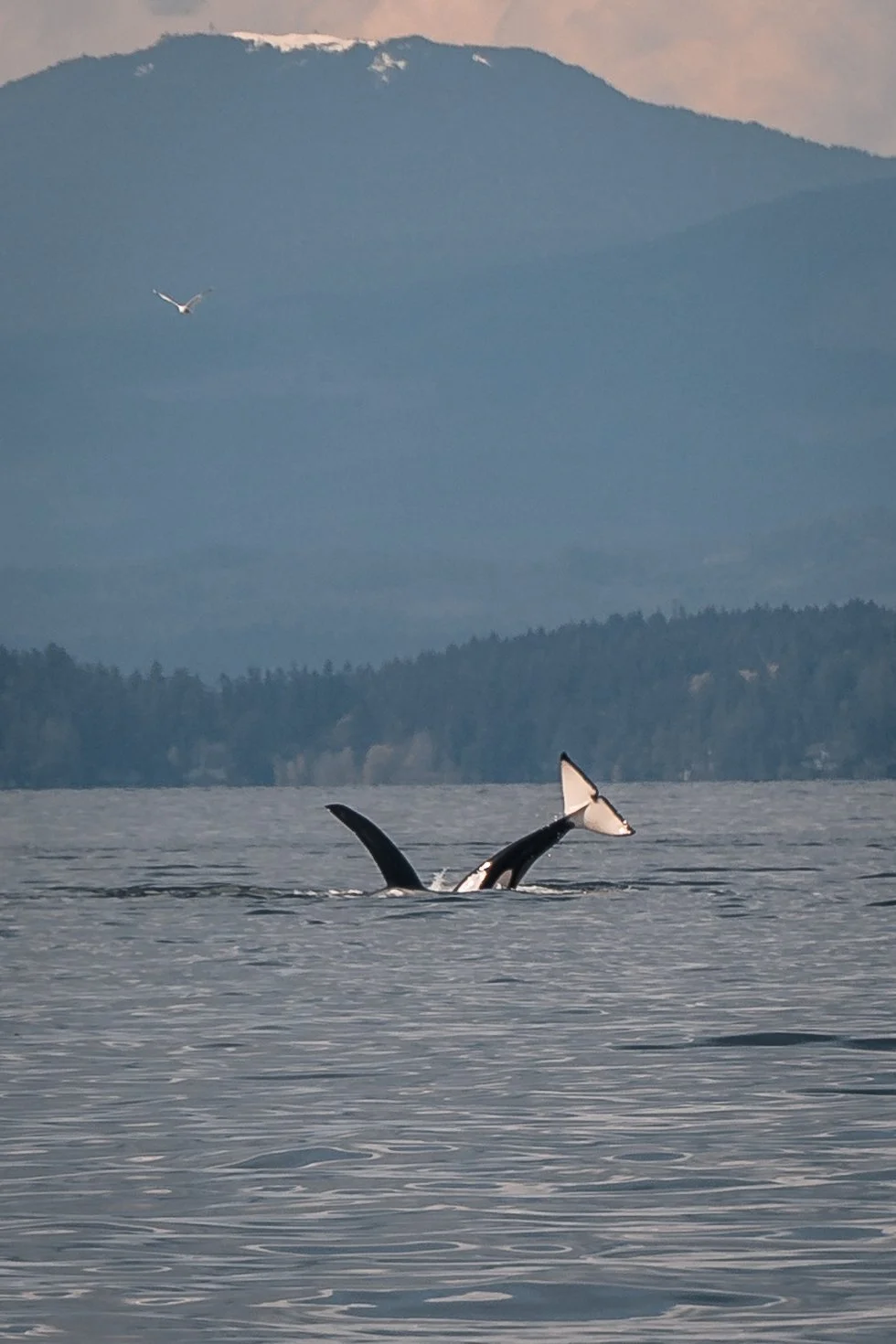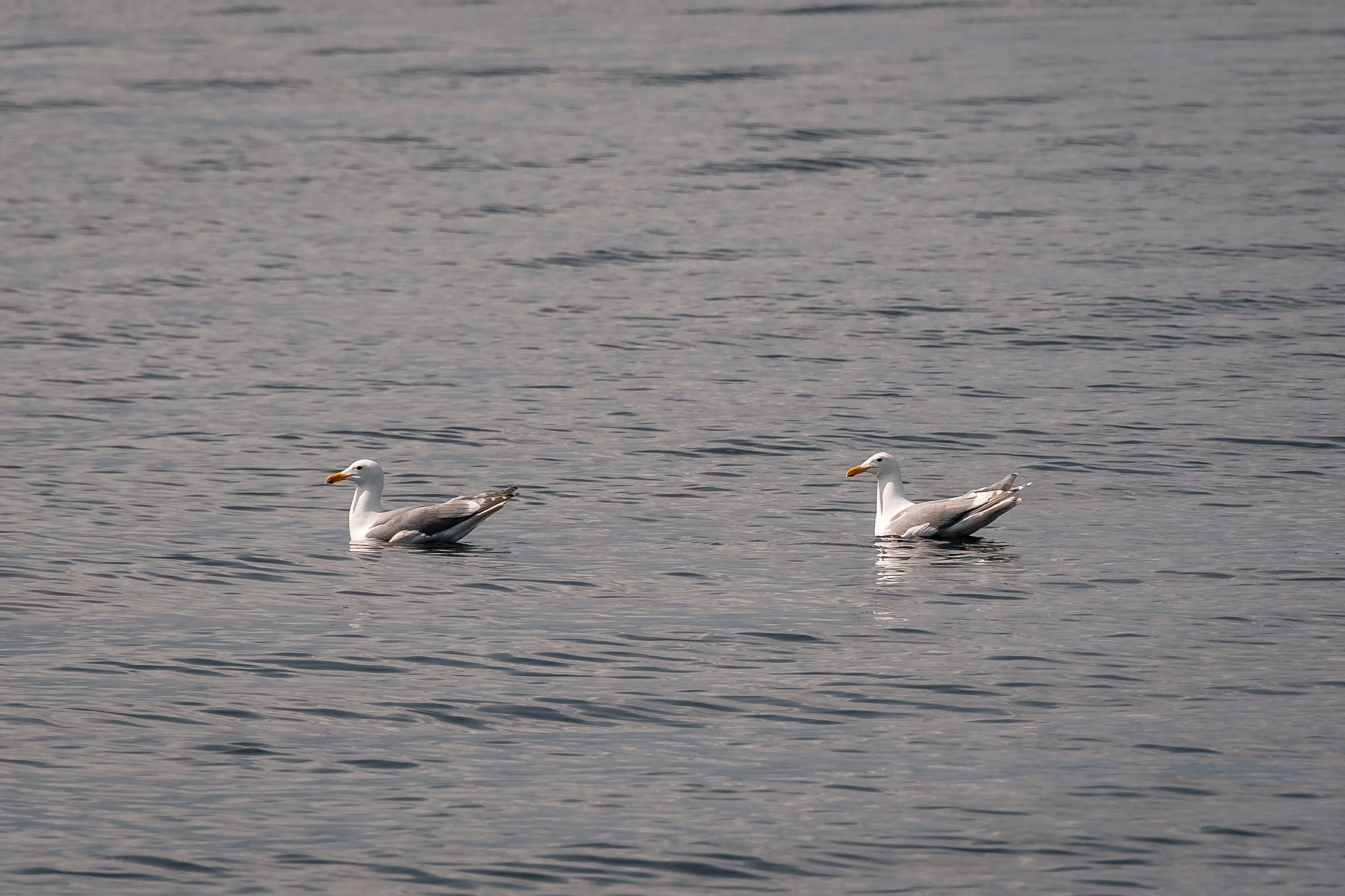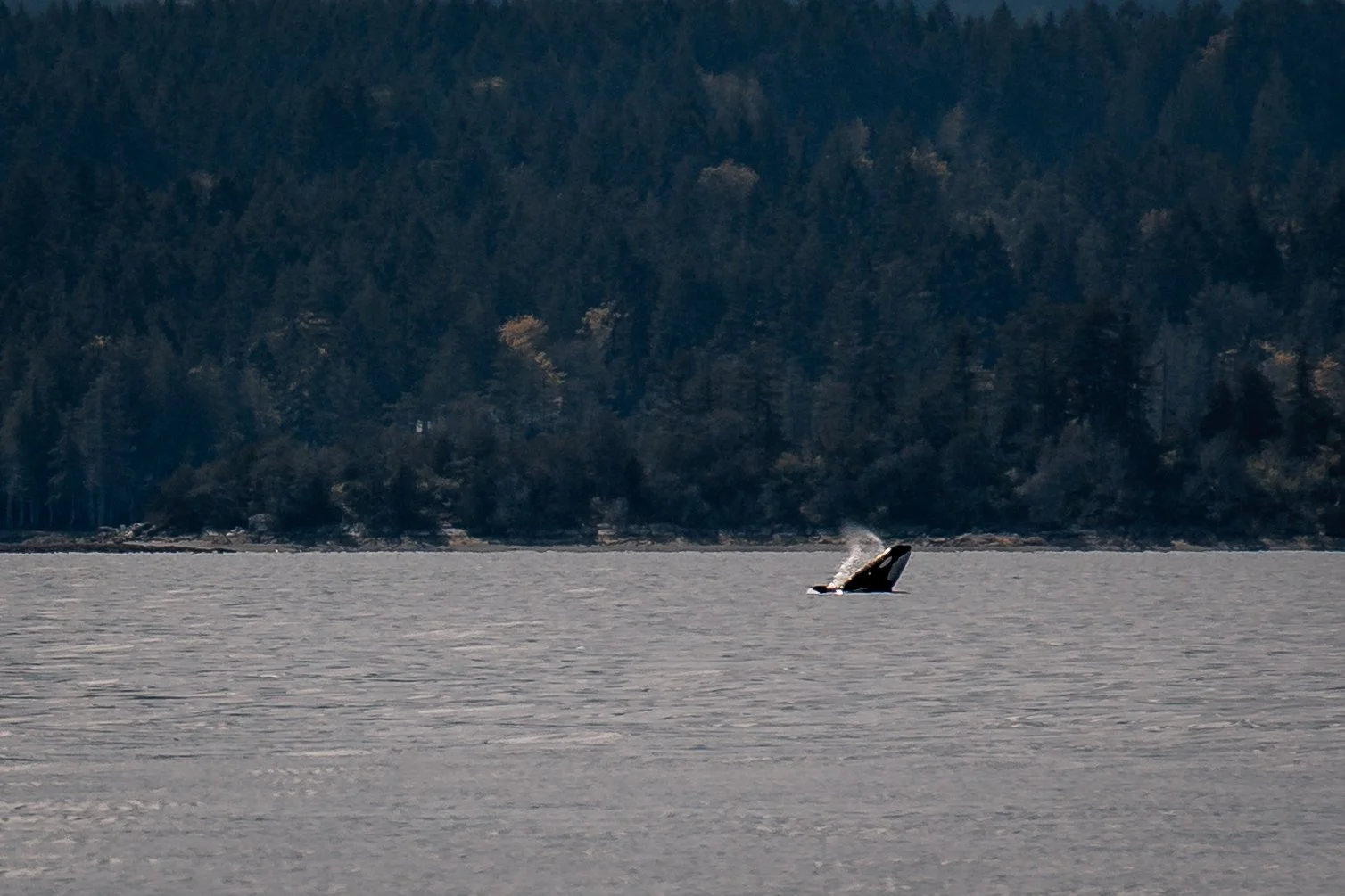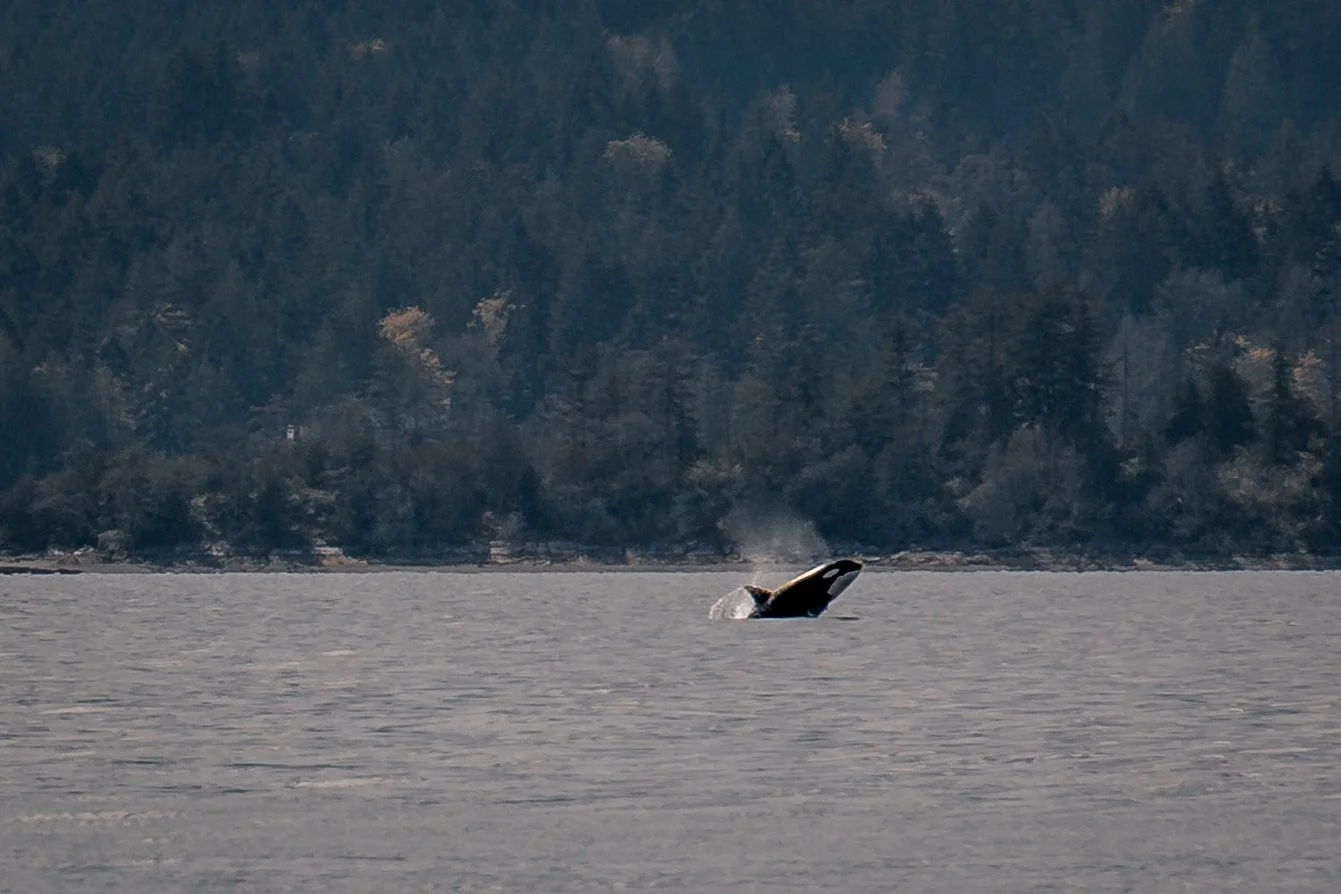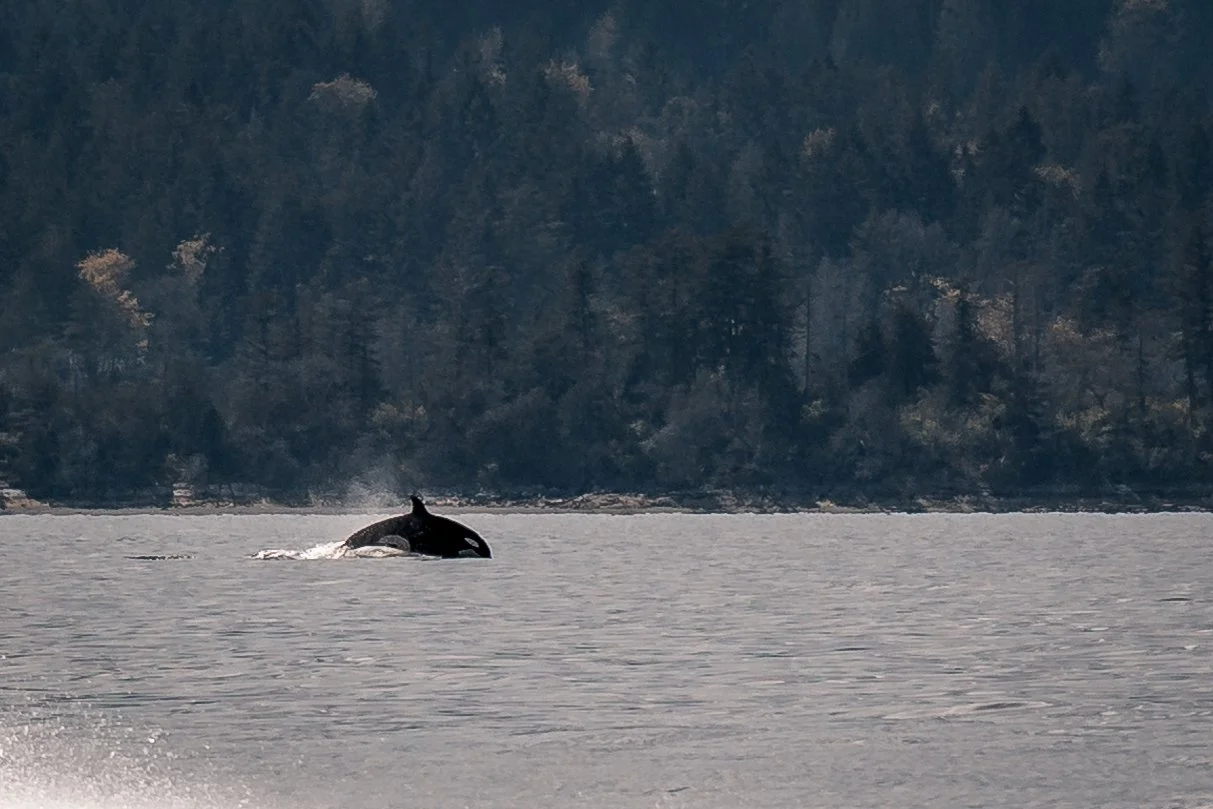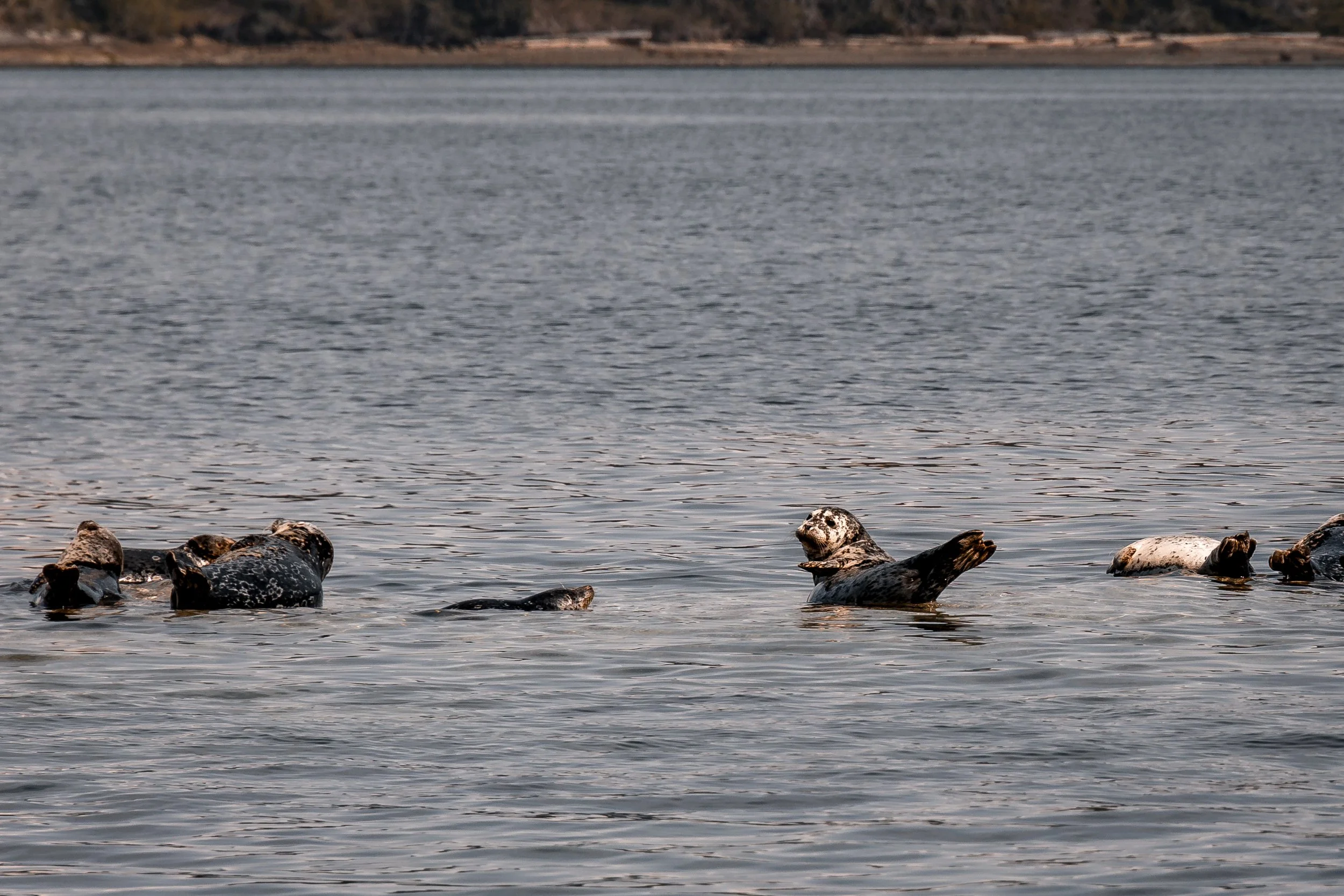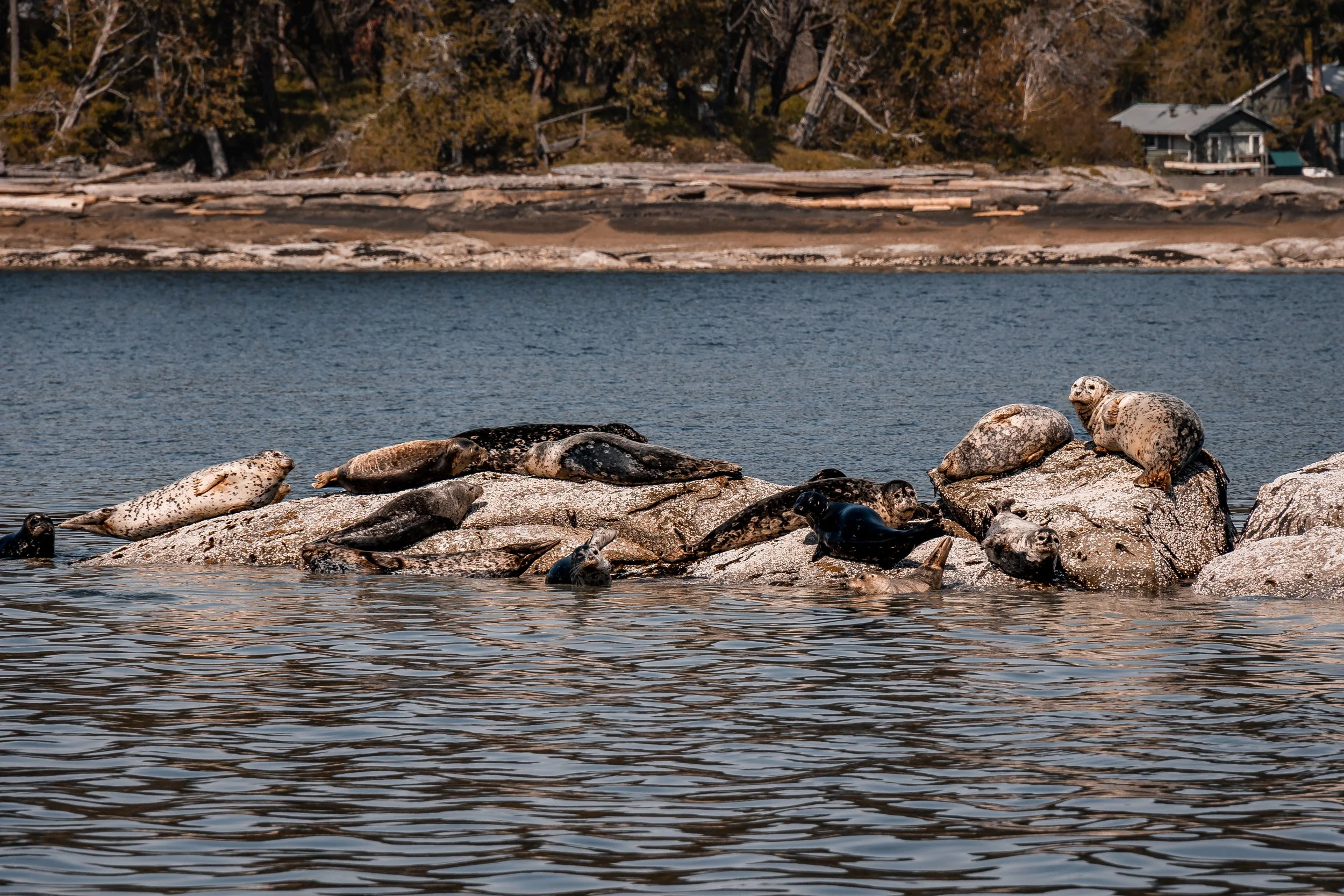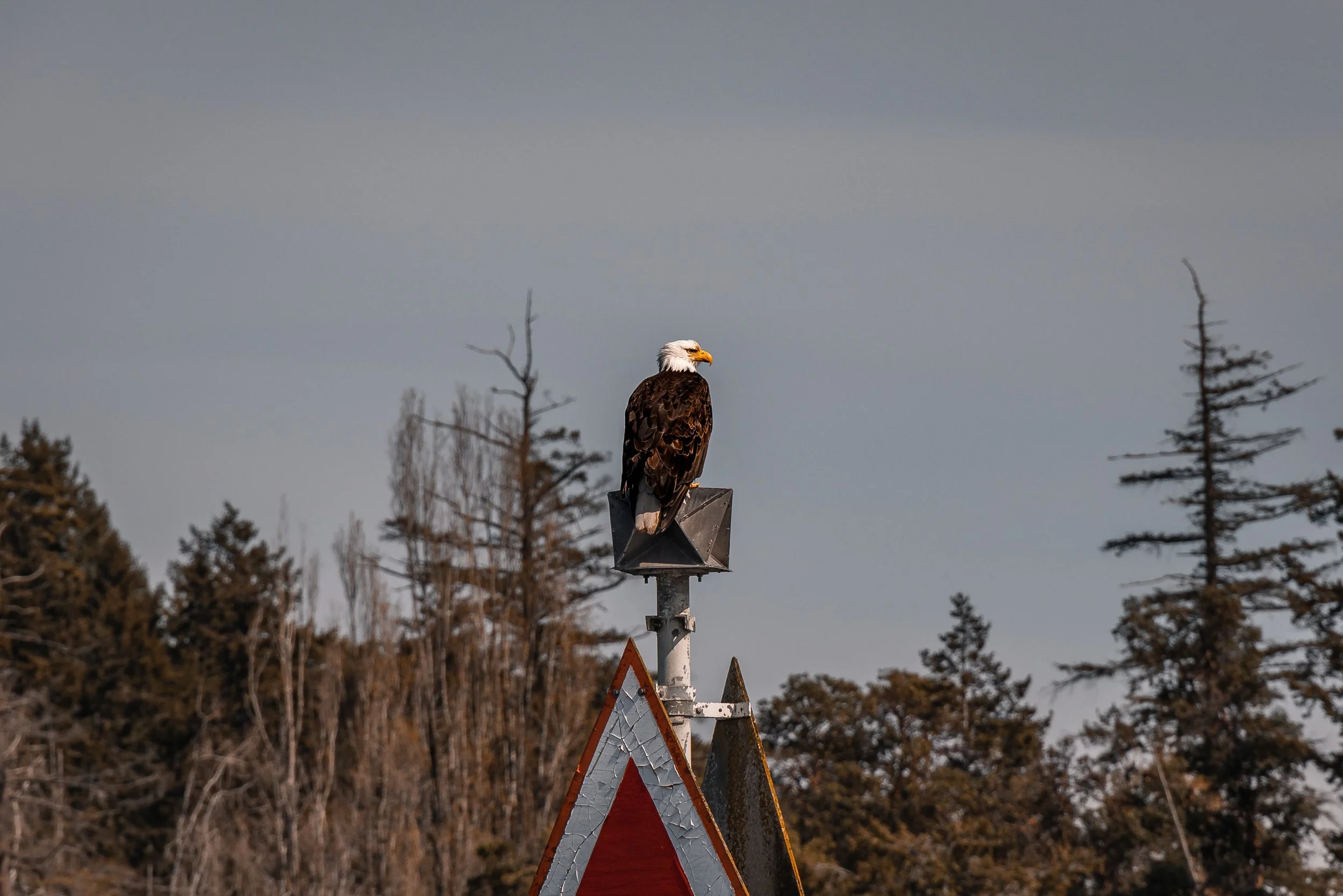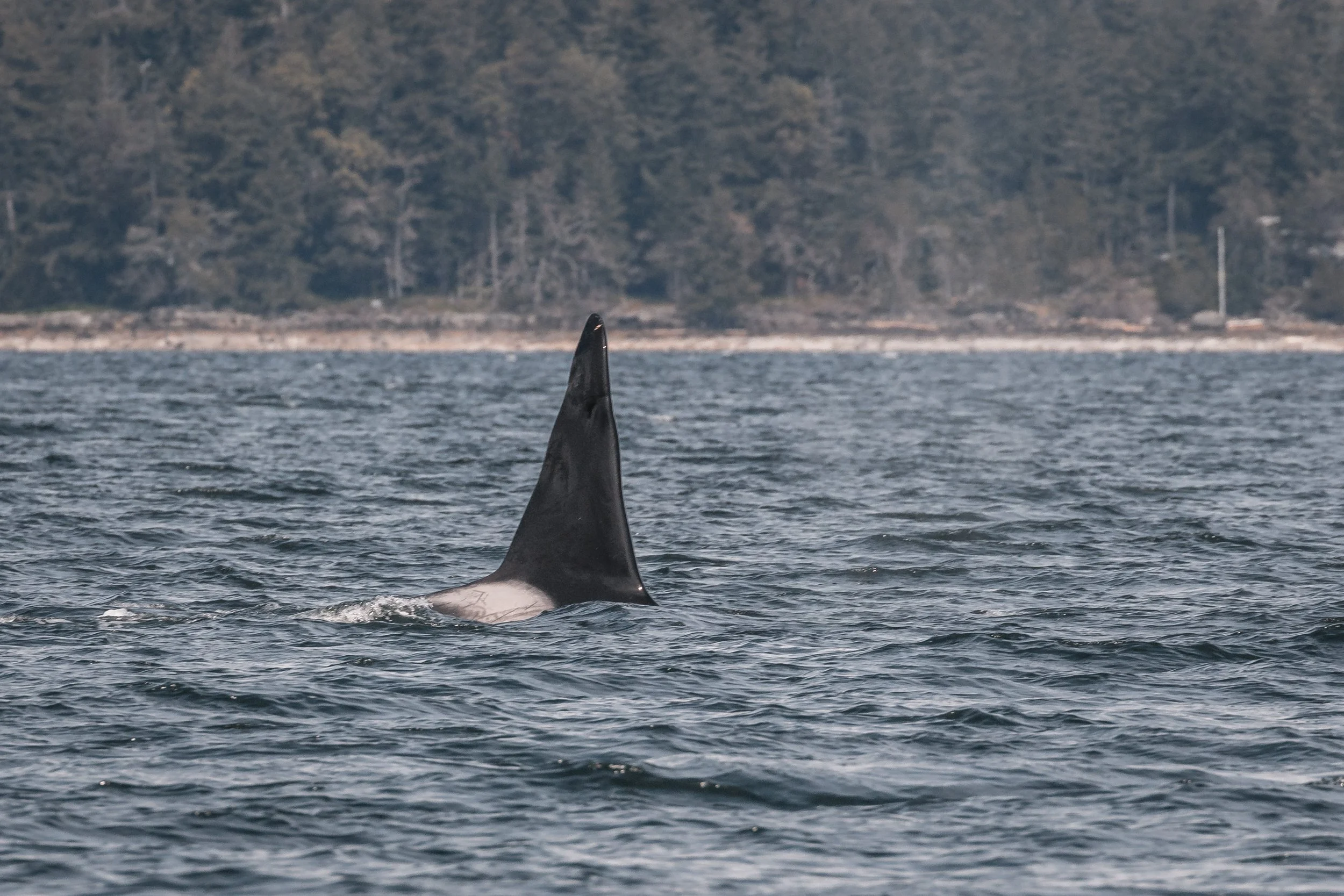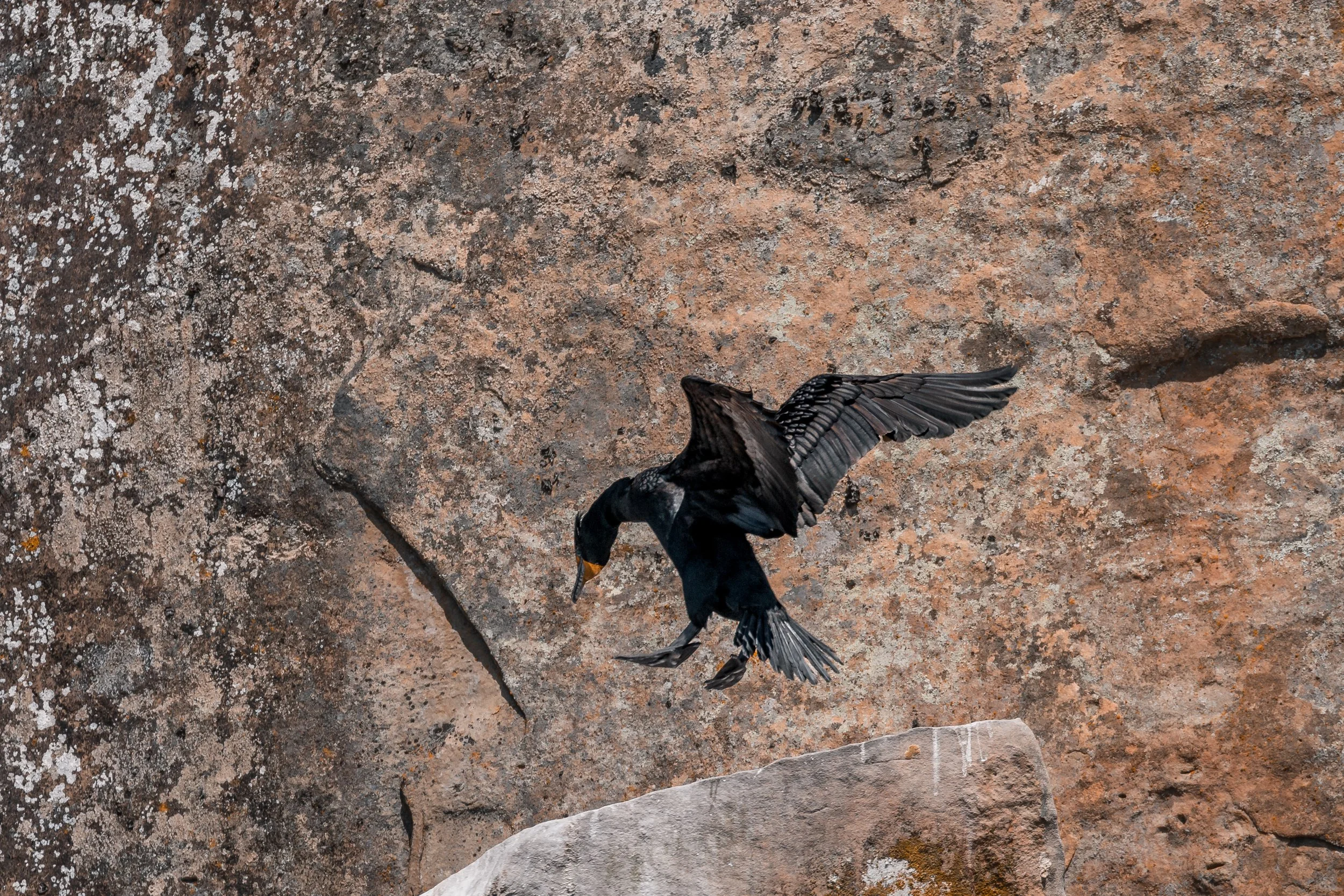April 16, 2022 - Orcas Ahoy!
2 of our vessels left the harbour at noon, eager to find some whales after the last 2 days of t-parties in Stuart Channel. As our boats approached Dodd Narrows the currents were going strong and a canoe passing through the narrows capsized, sending it’s 2 occupants into the frigid waters. Thankfully our captains and crew acted fast, and Kula was able to get both people into the boat safely. Thankfully neither person had any injuries, and we were able to get them safely to shore.
After the rescue our boats traveled through Dodd Narrows and into the Gulf Islands and were quick to find our T-party still hanging out in Stuart Channel. The T018’s and the T023D’s were still hanging out and partying but the party was a bit more exciting today. While the group was traveling around, they started to do some tail lobbing, porpoising and one of our boats even got to see some breaching towards the end of their stay with the whales.
We often get asked “when will they jump” when we are watching orca. Unfortunately, there is no easy answer to that. Breaching takes a lot of energy from a whale, so it’s not something they do for no reason. When you consider that adult male orca can reach lengths of 23 feet or longer and weigh in at over 16,000lbs it makes sense that these mammals wouldn’t want to waste that energy. Often, we see orca breaching after a successful hunt or during a T-party, especially at the start of a T-party.
Breaching and tail slapping the water are all excellent ways of communicating to their friends and family. It could be a display of excitement to announce the end of a successful hunt, or a greeting to a friend they haven’t seen in weeks or even months. Seeing an orca breach is a rare and special treat, and it happens suddenly with no warning, so if you ever manage to get a photo of it count yourself lucky!
As usual after we said good bye to our orca we toured through the islands stopping to see harbour seals and sea lions hauled out at various spots.
Below are some photos of the day taken by Marine Naturalists Val Watson and Rebecca Stirling.
T019B Galiano diving as another whale shows off their tail. Photo by Rebecca Stirling.
Photo by Rebecca Stirling.
Photo by Rebecca Stirling.
Photo by Rebecca Stirling.
Photo by Rebecca Stirling.
Photo by Rebecca Stirling.
Photo by Rebecca Stirling.
Photo by Rebecca Stirling.
Harbour seals resting in the shallows. Photo by Rebecca Stirling.
Harbour seals hauled out on the rocks. Photo by Rebecca Stirling.
Mature Bald Eagle. Photo by Rebecca Stirling.
Turkey Vulture flying high. Photo by Rebecca Stirling.
T019C Spouter. Photo by Val Watson.
T019 Nootka. Photo by Val Watson.
Pelagic Cormorants checking out a nesting site. Photo by Val Watson.
Double Crested Cormorant coming in for a landing. Photo by Val Watson.

